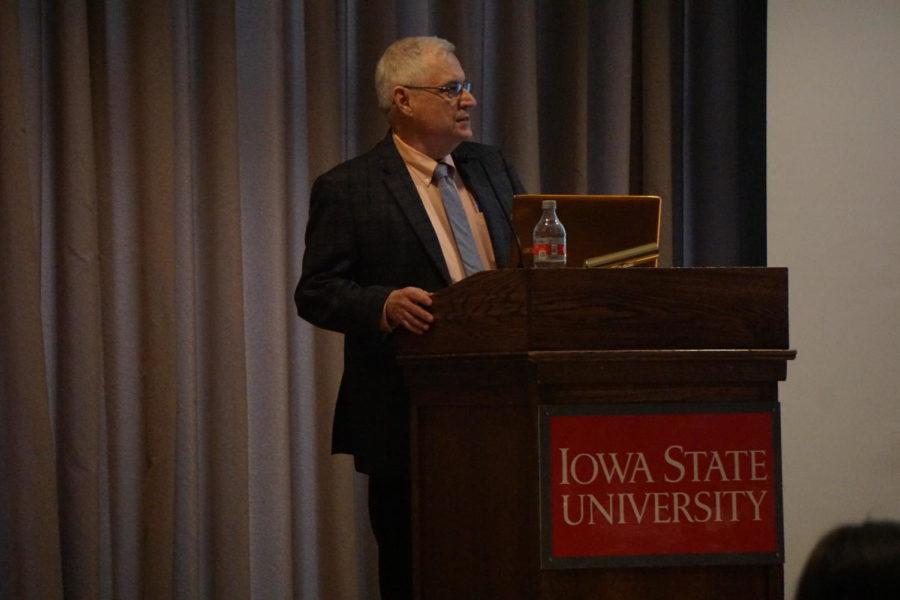Joel Best: Damned Lies and Statistics
Megan Petzold/ Iowa State Daily
Joel Best, professor in sociology and criminal justice at the University of Delaware, spoke to an audience about how statistics can be misinterpreted by people such as the media. He references some of his findings, such as the 20 books he has written and gotten published.
April 11, 2018
We’ve all heard of fake news.
It’s a buzzword that flies around media and social outlets every day, but what about fake numbers?
Similar to fake news, fake numbers are statistics that are either taken out of context, or manipulated in a way that allows numbers to portray something they don’t actually represent.
Dr. Joel Best, a professor in sociology, explained the reasoning behind these fake numbers and fake news as a whole.
Best compared facts to diamonds. He explained how diamonds exist, but humans have to put in work to turn them into a finished product.
Similar to diamonds, statistics are constructed by humans. The statistics exist, but it takes someone to put them together, collect them, and present them in some sort of medium.
Best gave reasons to be suspicious of facts. He said be wary of: big round numbers, how the source could the get that number, and if you find yourself exclaiming “I had no idea things were that bad!”, they probably aren’t.
There is also a problem of skewing that is particularly present in media today. Best presented the fact that opposing sides to an argument will report statistics that are completely opposite. The NRA might report “most Americans are for less strict gun laws” while opposing organizations might report “most Americans are for more strict gun laws”.
Best points out that neither of these organizations are wrong, they most likely have completely different focus groups, but the survey is flawed.
Best wanted the audience to know that “its not just the other guys”. Democrats, republicans, liberals, and conservatives alike skew or misrepresent data. Even universities or academic journals can be found guilty of releasing information that only benefits the organization and throwing away anything else. A member of the audience brought up her concern saying her department only publishes studies that are “good”, in her words.
One of Best’s closing points was that “cynicism is not critical thinking”. It doesn’t make sense to automatically write off every statistic or number that is published. Instead, he urges the public to think critically about where the statistic came from and what it can mean. Statistics that are given usually aren’t flat-out wrong, but often fit to a certain agenda.
Statistics from news and media is usually sourced from good sources, most often the governments websites or databases, but Best explained that these data sets can be manipulated in almost any way.
Many of the statistic explanations Best gave during the presentation would not be apparent to someone who has not researched this before. In Best’s books, Damned Lies and Statistics, More Dammned Lies and Statistics, and Stat-Spotting, Best goes more in depth about how to spot these misleading and skewed statistics.
















